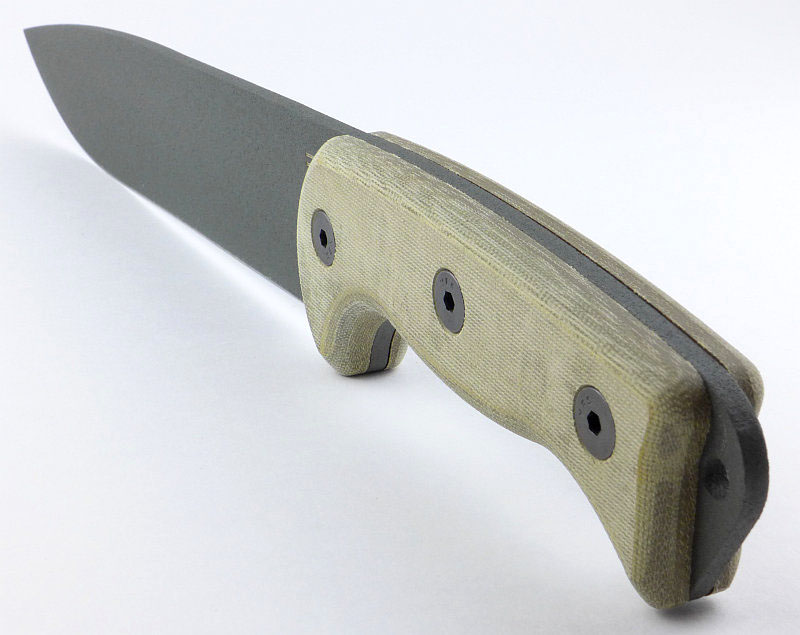The Ontario Knife Company RTAK II review is the second of a three-knife review series featuring the Blackbird SK-5, RD Tanto and RTAK II. (See – OKC Group Review.)
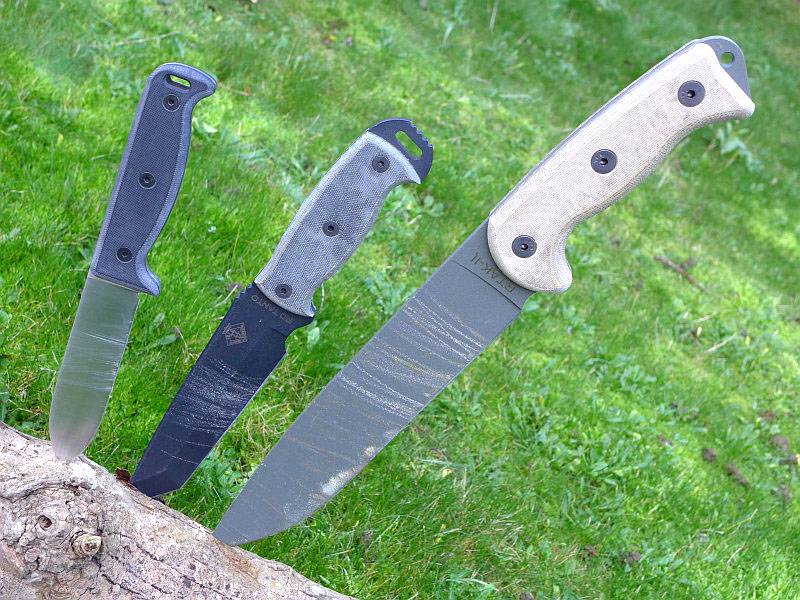
Part of the OKC RAT series, and designed by Jeff Randall and Mike Perrin of ‘Randall’s Adventure and Training’, the RTAK II (Randall’s Training and Adventure Knife) is the largest of the series. This review is looking at the plain edge variant (you can also get a part-serrated version).
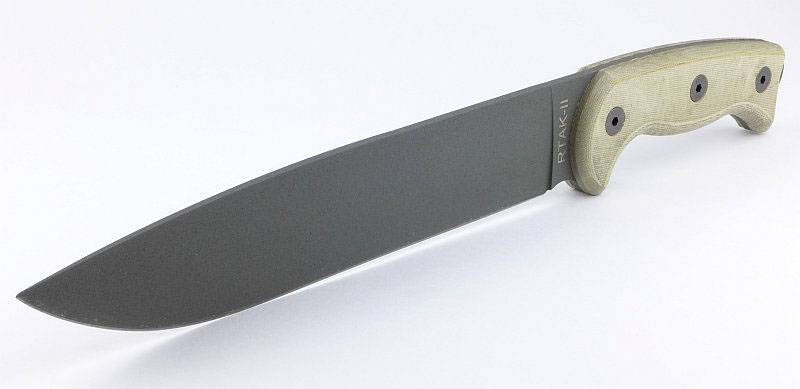
The Blade and Handle Geometry:
Most knives specifications have a basic description of the blade geometry, but in this section I will be taking a more detailed look at geometry and balance.
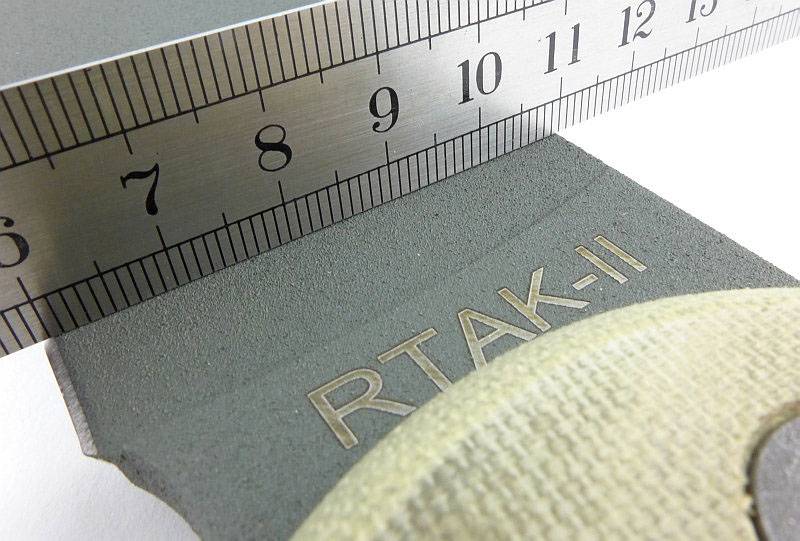
Using a set of gauges and precision measuring equipment including a Vernier protractor, callipers, fixed radius gauges and the unique Arc Master adjustable radius gauge (the one that looks like a crossbow).
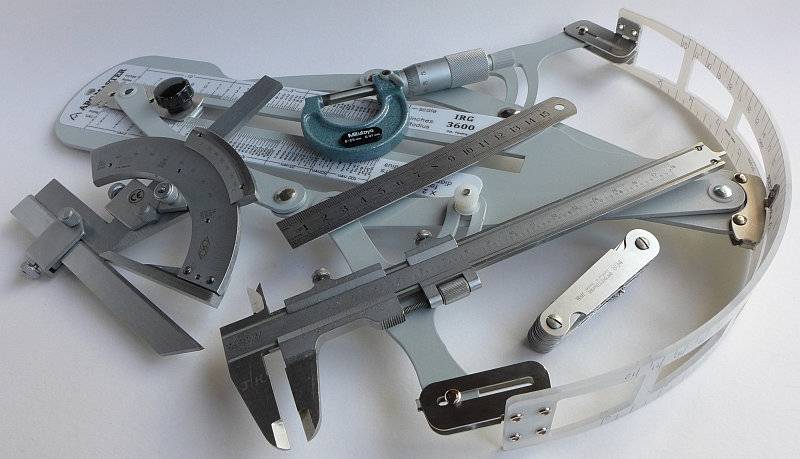
These measurements have been tabulated and are presented along with a few reference blades (8″ Chef’s Knife, 5.5″ Santoku and the popular Fällkniven F1).
Key aspects such as the primary bevel angle, grind type, blade depth, blade thickness, length, weight are detailed, along with balance information.
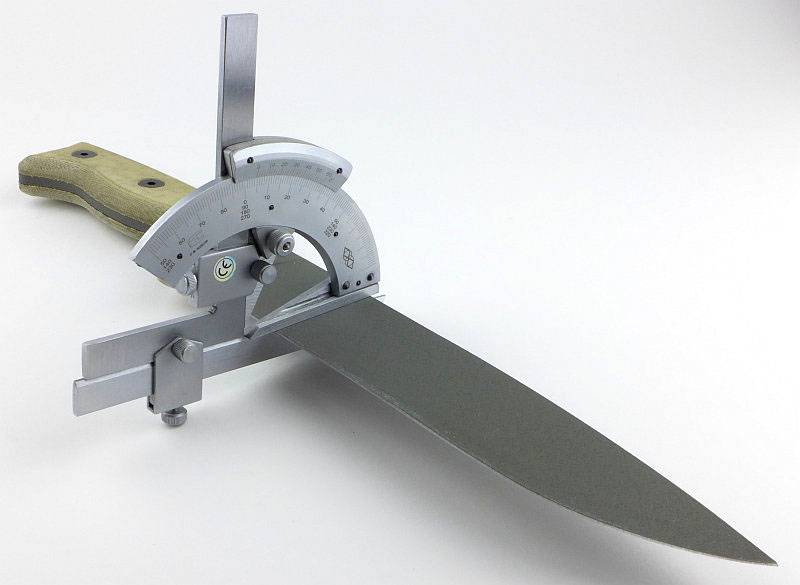
The ‘Balance relative to the front of the handle’ tells you if the knife will feel front heavy, or if the weight is in your hand (a positive value means the weight is forward of the front of the handle). The ‘Balance relative to the centre of the handle’ indicates how close to a ‘neutral balance’ the knife has in the hand.

In the case of full convex grinds the approximate centre of the grind is used for the primary bevel angle estimate. This table includes the parameters for all the OKC knives in this series of reviews.
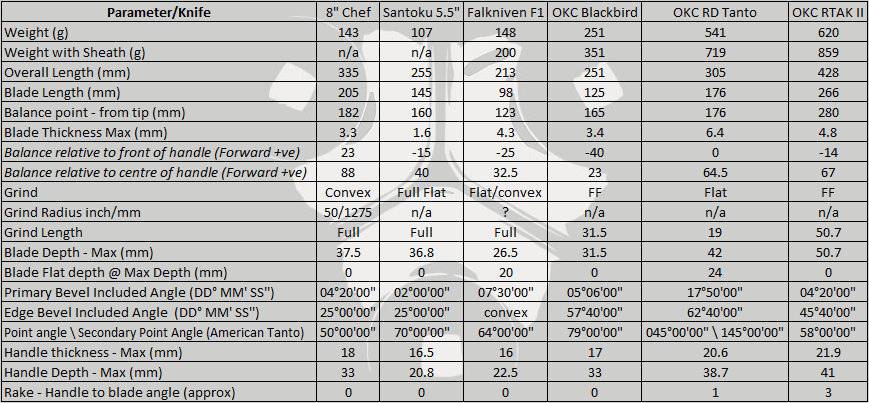
The blade is made from 5160 steel.
Explained by the Maker:
The reasons for certain design choices may not be clear when simply looking at an object, so this section is intended to give an insight into the thinking behind a design by speaking to the designer themselves.
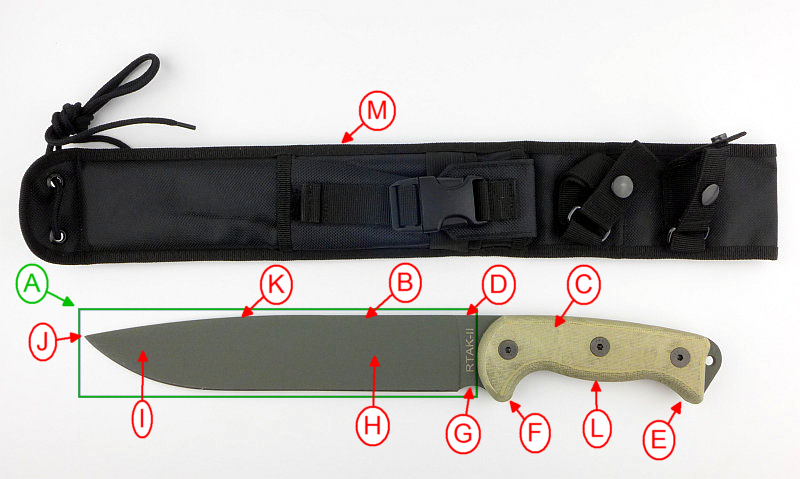
Though this knife is well established, and Jeff Randall is no longer directly associated with OKC, he was kind enough to give me a few insights into the history and design of this knife.
The RTAK was designed based on Jeff’s and Mike’s experiences in the jungle back in the mid-90s. There were no specific plans when designing the knife, as at the time R.A.T. were simply designing a knife that would be a compromise between a full length machete and a fixed blade. Machetes are still the preferred tool in jungle environments but shorter fixed blades work better for finer work. The RTAK was Jeff’s and Mike’s vision of that compromise.
Before moving to Ontario Knife Company to be able to increase production capacity, the first RTAKs were made by Wicked Knife Company (Newt Livesay).
Mike and Jeff had been running around in the jungle and using knives enough to know what felt good in the hand. Basically they knew nothing about making a knife when they came up with the RTAK and simply based the blade length (A) and other design aspects on what works, nothing more.
The problem with a lot of big knives is the steel is too thick for the width of the blade, even on full flat grinds. This causes a geometry issue with regard to cutting efficiency, and the choice of a 3/16″ blade thickness (B) and a full flat grind (H) for the RTAK II is a compromise between toughness and cutting efficiency. A machete works so well because its overall blade geometry is thin.
When talking about the handle material / style (C) and the fact that this is seen on many OKC knives, Jeff commented that R.A.T. had introduced this handle style to OKC. Simple to produce and doesn’t have a lot of bumps and hotspots that will fatigue you during extended use.
As it is a large knife, choking up to do finer work means moving your control hand out towards the point and pinch gripping the blade; for this reason, jimping was not worth adding to the spine near the handle (D), so it was left plain. It is possible to use the choil (G) for choking up on the blade, but it was not intended for that purpose; it was mainly put in as an edge grind relief.
A long finger guard (F) and grip hook (E) come from various machete designs. Considering the finger guard specifically, after using a large knife for a while under tough conditions you want as much protection as you can get. Overall the grip and palm swell (L) were made a generous size as large handles stress you less on extended use.
Using a drop-point (I) goes back to the compromise between a fixed blade and machete; drop points do well for most tasks in the field.
A few more details:
Ontario Knife Company’s standard knife box.
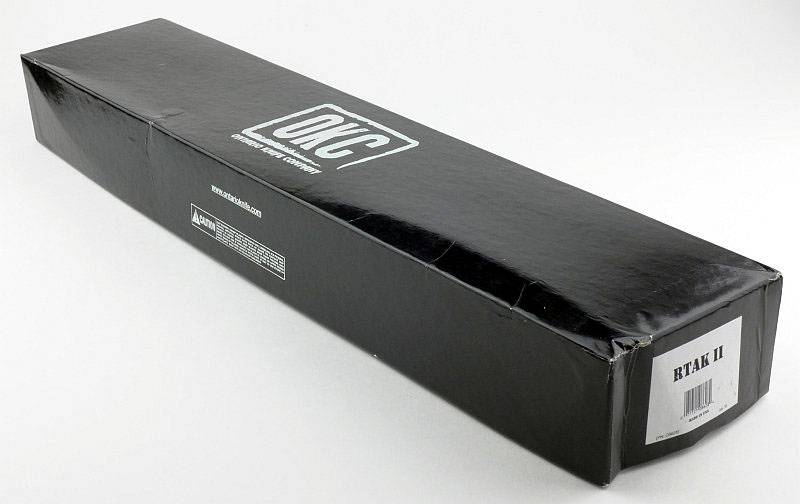
Inside the box the knife has a cardboard protector over the blade, and the knife is not fitted into the sheath.
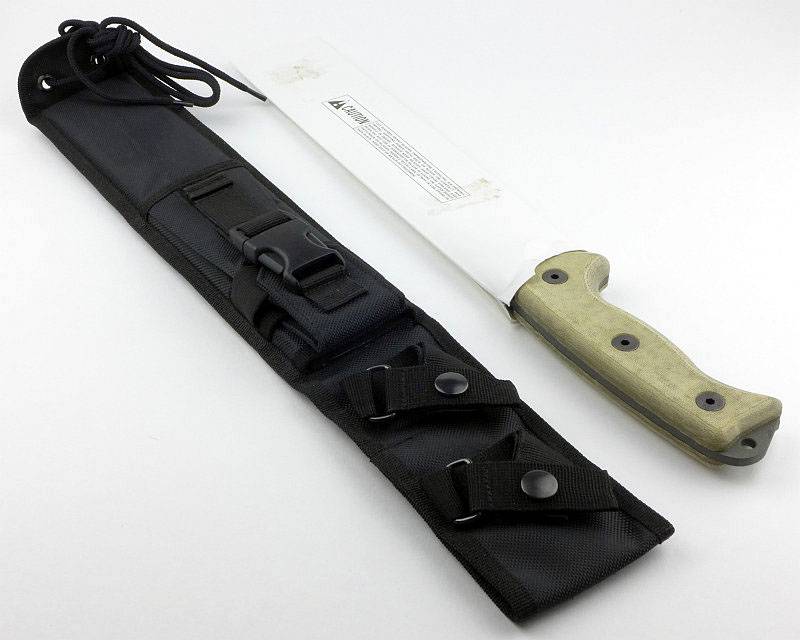
The first view of the RTAK II – now THAT is a knife!
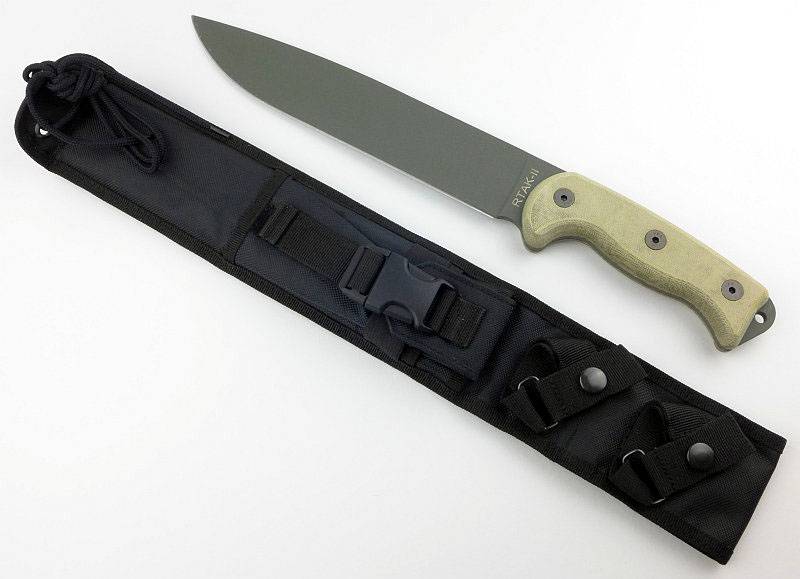
Before going back to the knife, a quick look at a few details for the sheath. On the back, the sheath has a combination PALS/MOLLE/belt loop system. Effectively you use the top PALS strap for a belt loop and can change the placement and size using the webbing.
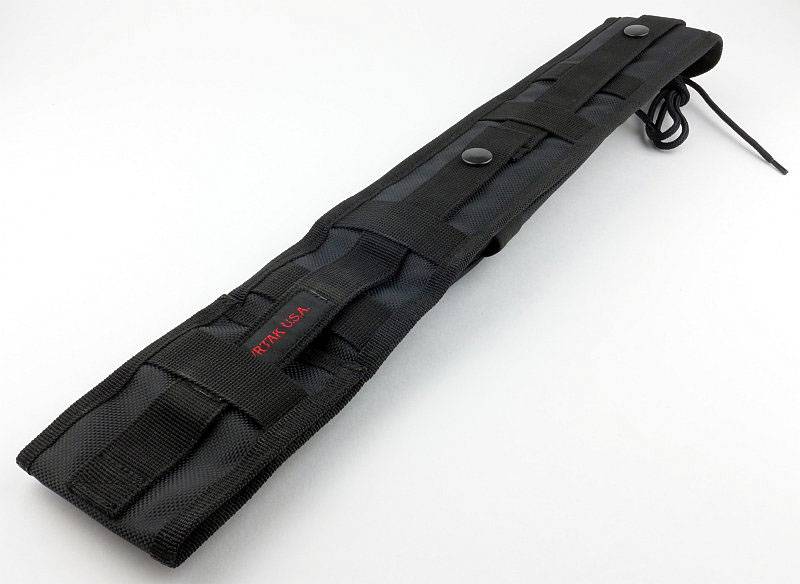
There are two PALS straps as the sheath is very long. Both using poppers to secure the end of the strap.
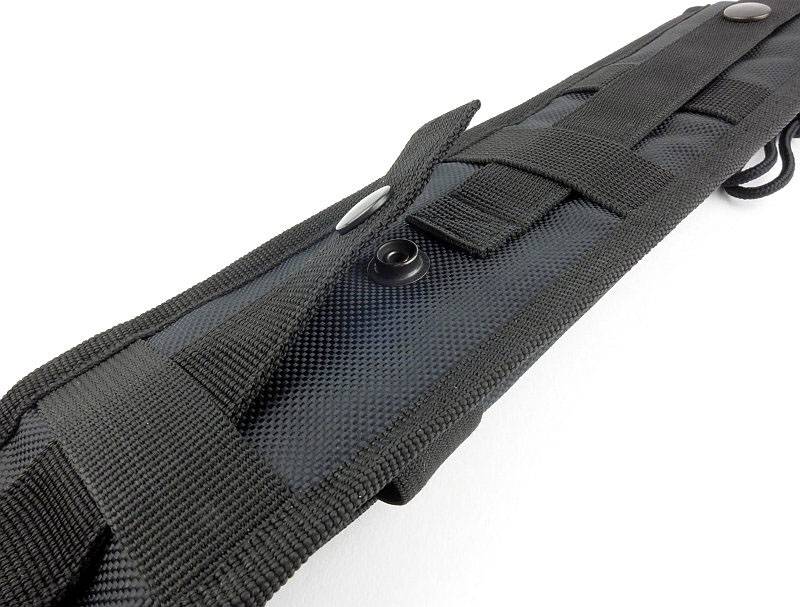
Metal eyelet holes are provided for a leg tying point and it comes with a lace fitted through the holes.
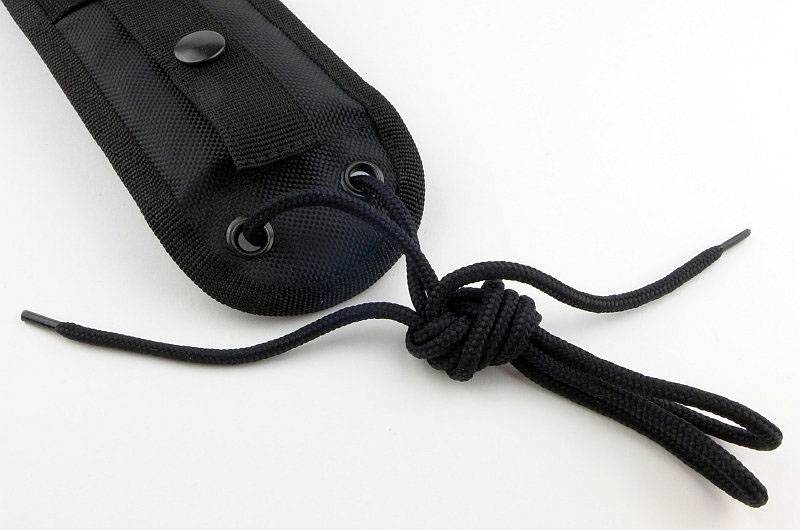
This is a long sheath, and has a pocket and twin straps to hold the handle.
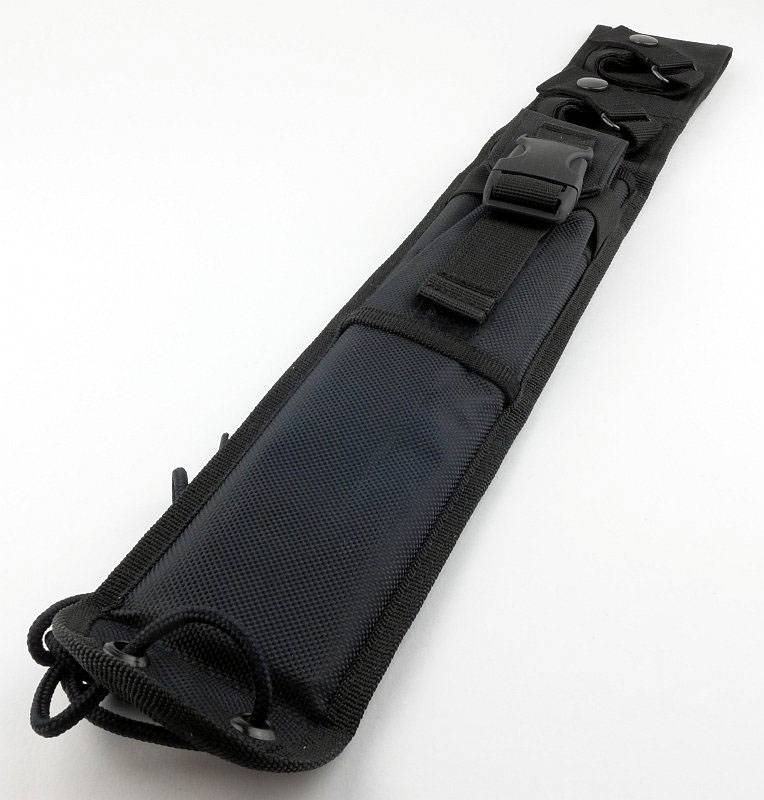
Exactly as with the RD Tanto, an expanding pocket is kept closed with a plastic snap-buckle. Opening the pocket shows a fixed elastic strap keeps the pocket neat and tight onto whatever is held in the pouch.
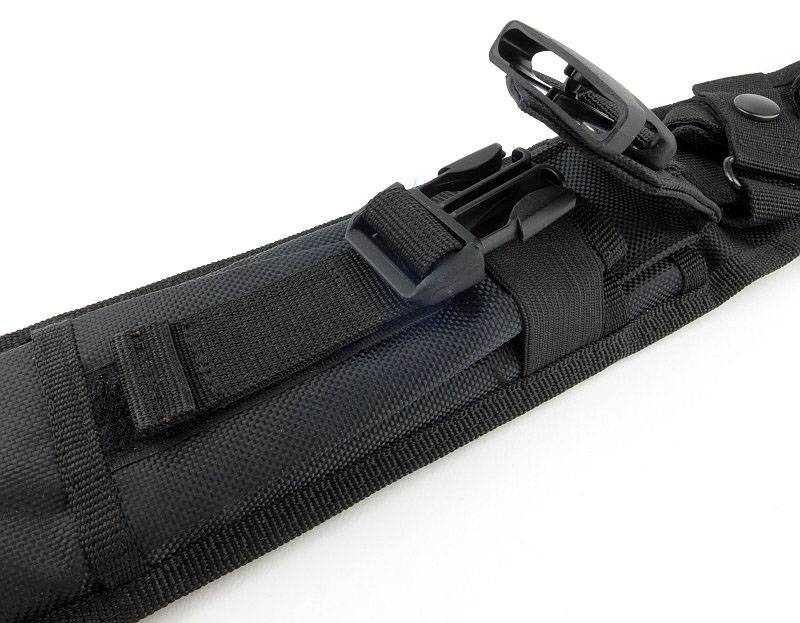
A kydex liner is provided in the sheath, and in this case the blade fits easily without rubbing.
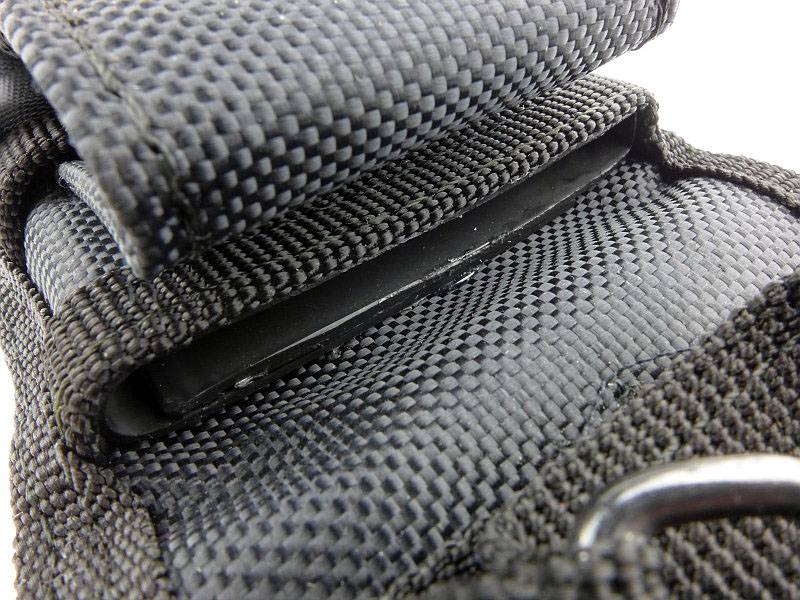
Both the knife retention straps are adjustable to allow the user to tighten or loosen the grip on the knife to suit.
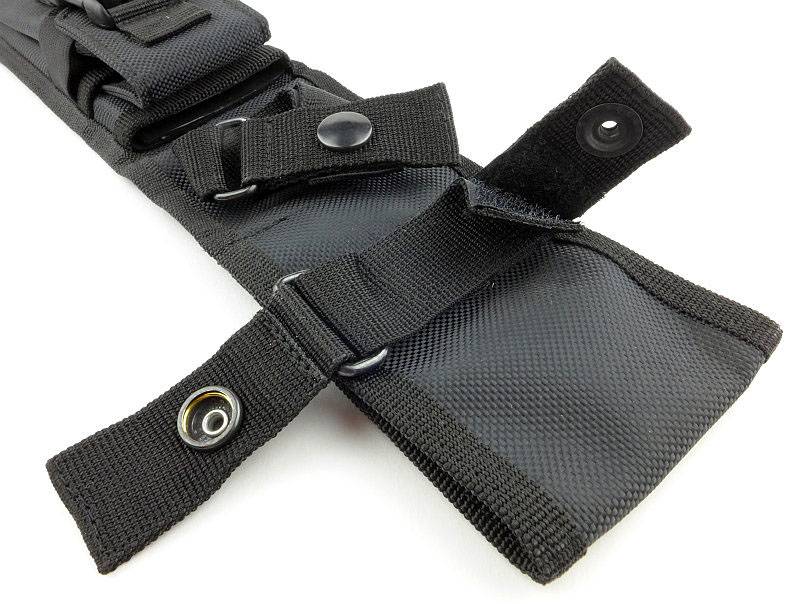
Overall a substantial package.
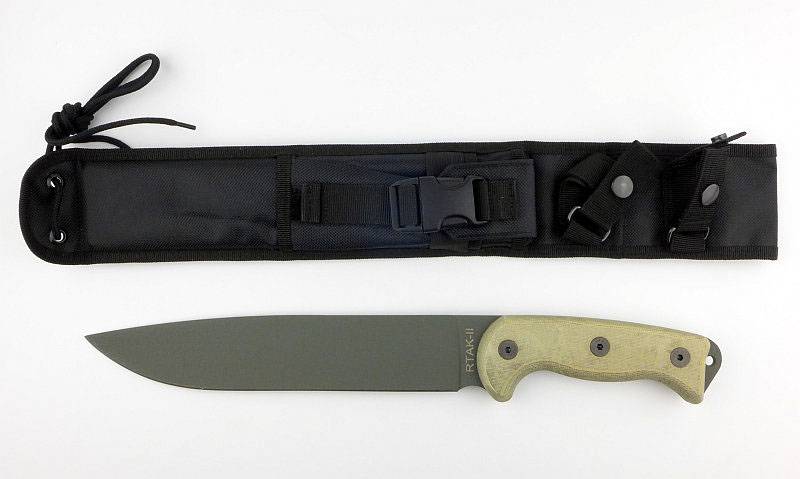
Fit of the blade to the sheath is just right.
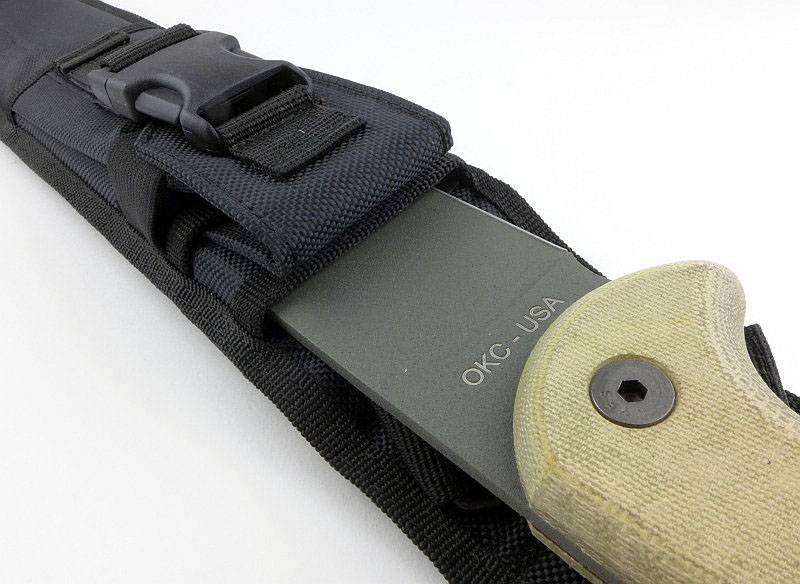
Two straps with popper closures are used to secure the handle when in the sheath.
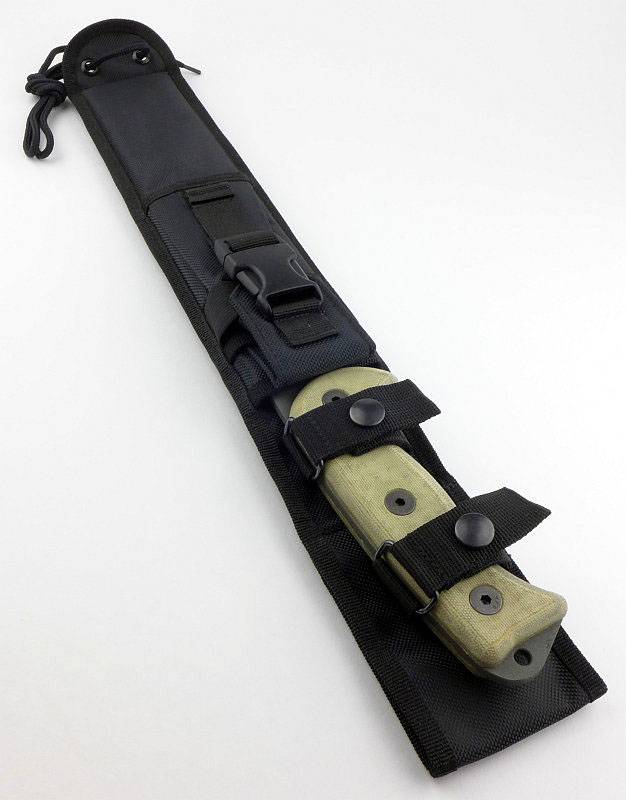
Despite its size everything looks nicely in proportion.
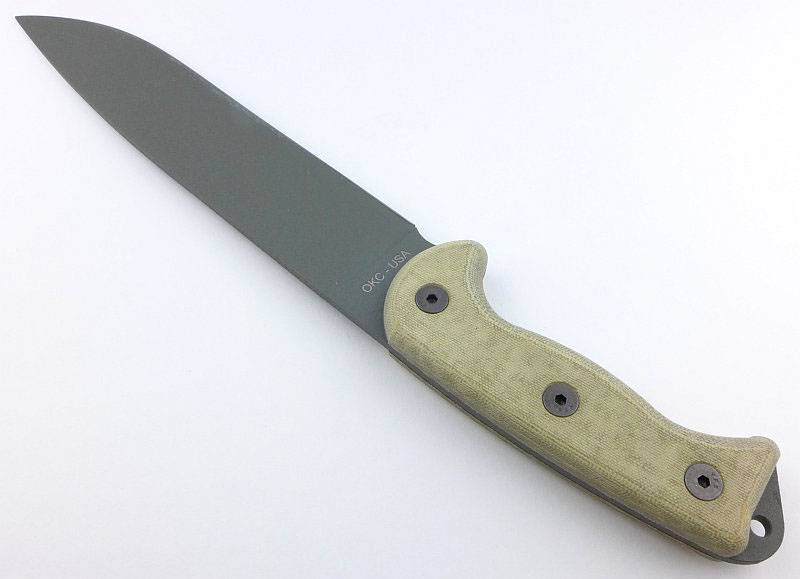
OKC-USA is stamped into the blade coating on one side.
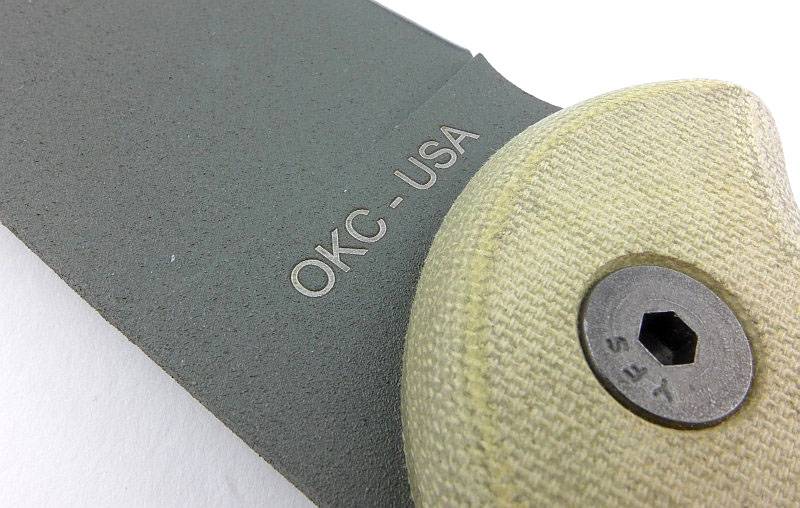
The micarta handle slabs are secured with three bolts.
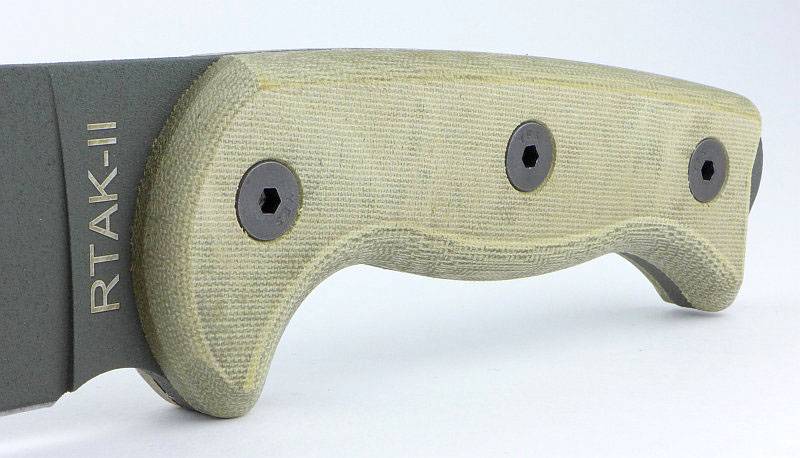
All handle edges are nicely rounded over making the grip very comfortable.
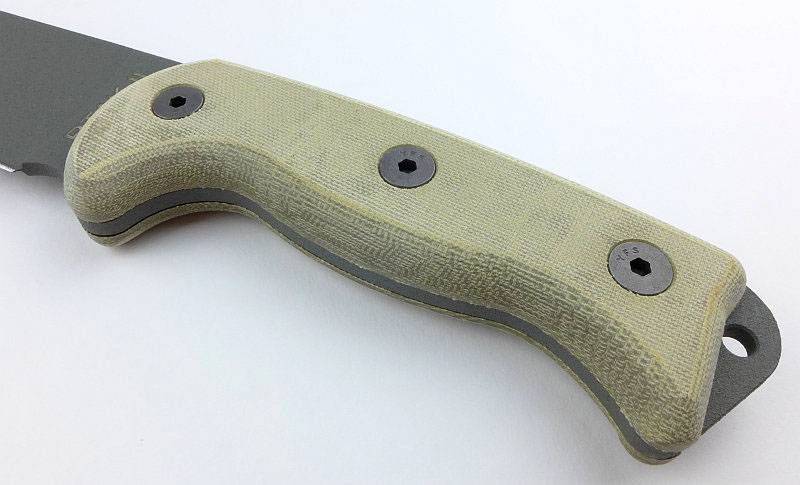
A lanyard hole is included in the exposed pommel.
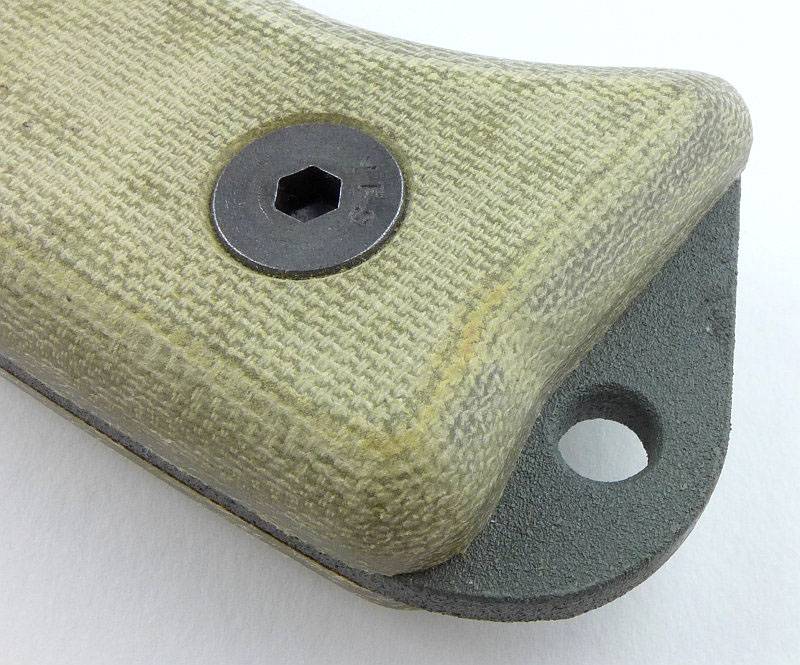
There is a slight overlap of the handle slabs which are shaped separately to the blade tang. You don’t notice this in use.
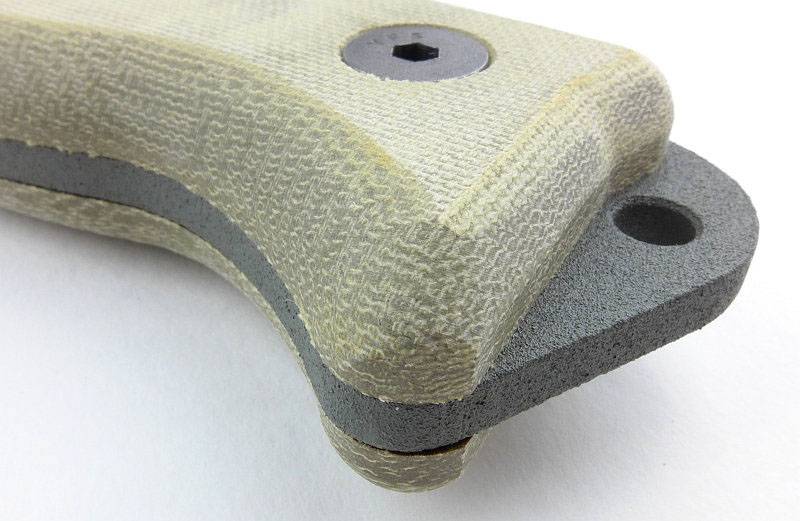
Not intended as a finger choil, here is the edge relief choil and its relationship to the plunge line.
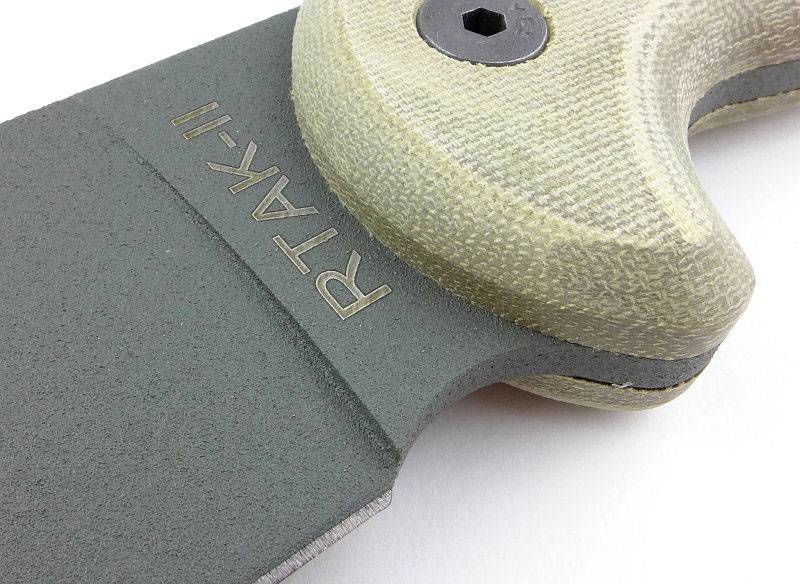
For corrosion resistance, there is a blade coating. It was much rougher than I expected and is somewhat abrasive. (Any marks on the edge are due to there being a waxy protective film on the blade.)
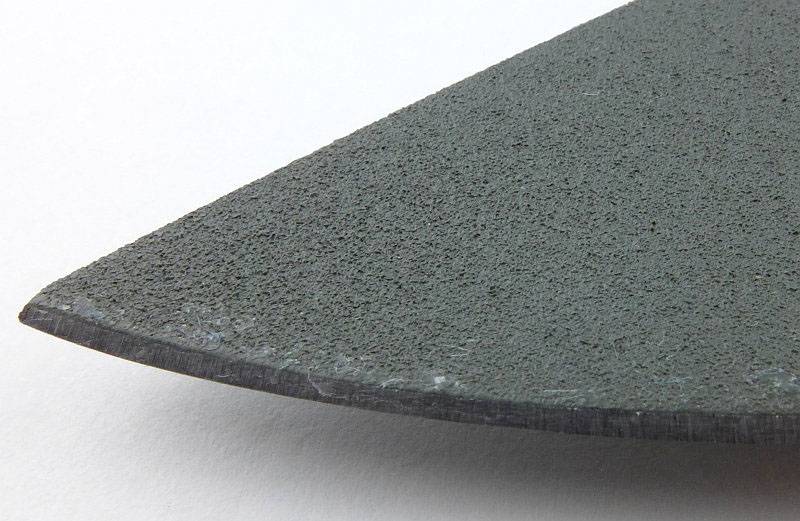
This RTAK II arrived with a great working edge.
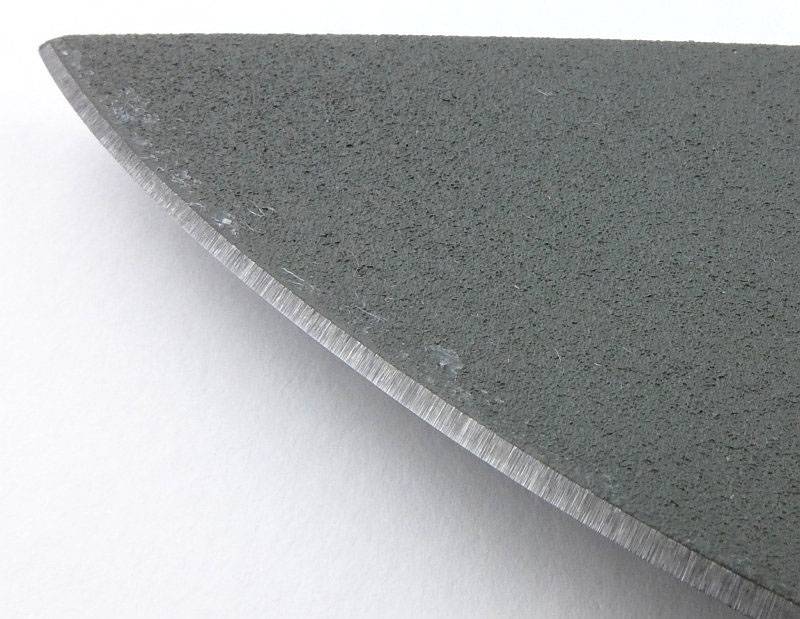
Once you pick it up, that large blade feels like it has shrunk and is as manoeuvrable as a much smaller blade.
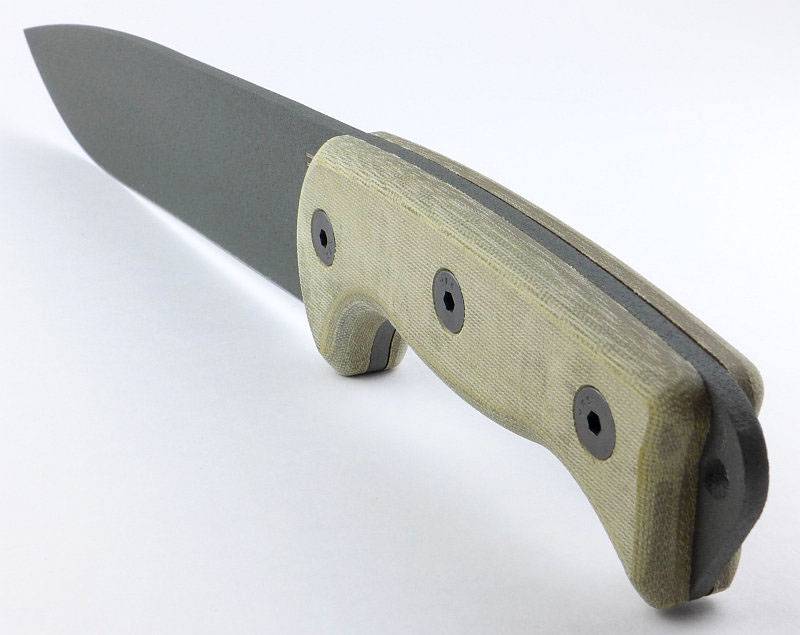
What it is like to use?
The first thing that struck me, as soon as I had the RTAK II in my hand, was how much lighter than expected it felt for a knife this large. Immediately I could see myself being able to do a lot of work with minimal effort. It is a big knife but simply doesn’t feel big. Here you can see it in my hand (I take XL sized gloves) and the grip fills my hand well, and despite being one of the largest grips I’ve used, doesn’t feel a stretch.
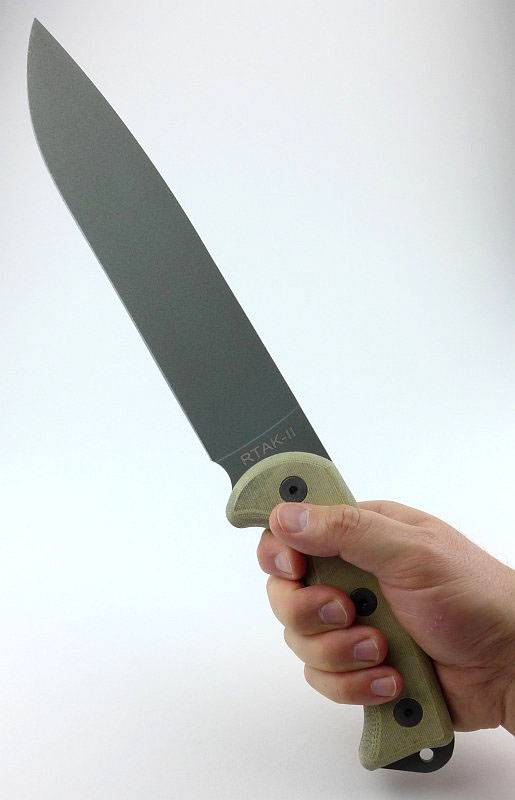
To give another idea of scale, here it is next to the Fällkniven F1 and a Spyderco UK Pen Knife. (Yes, they do look tiny next to the RTAK II.)
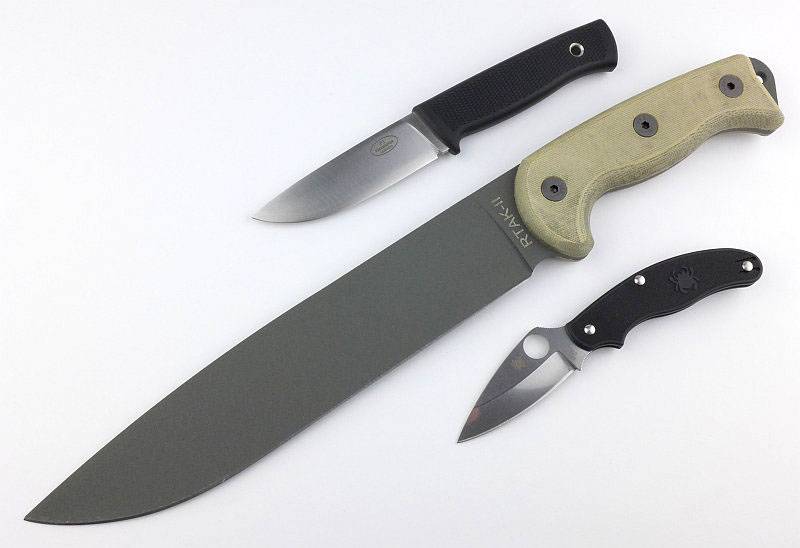
Taking the RTAK II out for a few woodland tasks, it was in its element; chopping, carving, slicing, splitting, feathering all done with ease. The only real issue I could see was that rough blade coating and its tendency to pick up ‘rubbings’ (for want of a better word). This would make it less than ideal to follow up with food prep, as it will have contamination in the coating and is not easy to clean.
One of the comparisons I made to the other OKC knives was in putting a point on a stick. Due to the full flat grind, the RTAK II cut extremely well letting you chose the cut direction easily. The edge bites well, eagerly getting stuck into all woodland tasks.
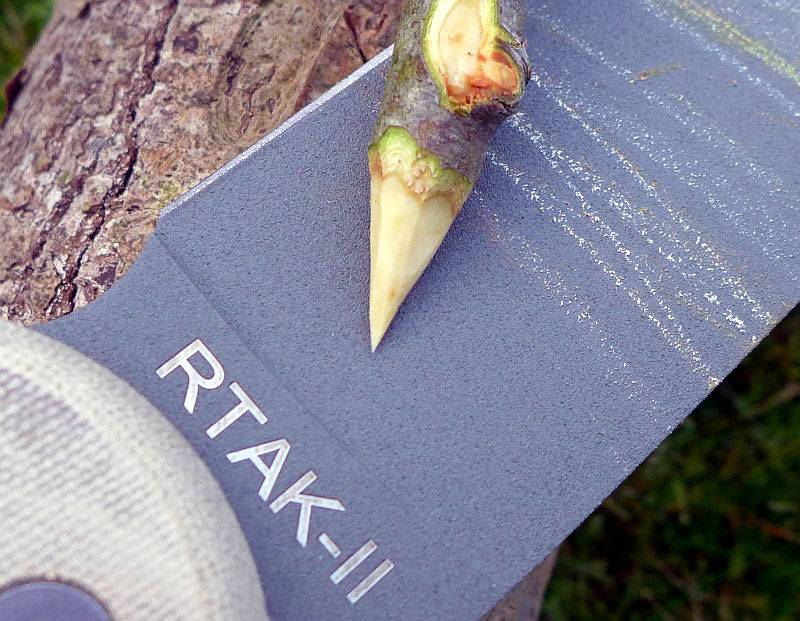
Review Summary
The views expressed in this summary table are from the point of view of the reviewer’s personal use. I am not a member of the armed forces and cannot comment on its use beyond a cutting tool or field/hunting knife.
Something that might be a ‘pro’ for one user can be a ‘con’ for another, so the comments are categorised based on my requirements. You should consider all points and if they could be beneficial to you.
| _______________________________________________ | _______________________________________________ |
| Things I like | What doesn’t work so well for me |
| _______________________________________________ | _______________________________________________ |
| Fantastic handling. | You know this knife is strapped to your leg. |
| Can work comfortably for long periods. | Rough blade coating. |
| Great slicer. | Grip could be too large for some. |
| Curent version is 5160 steel | |
| ‘Feels’ light | |
| Big enough to slash, small enough for fine work. |
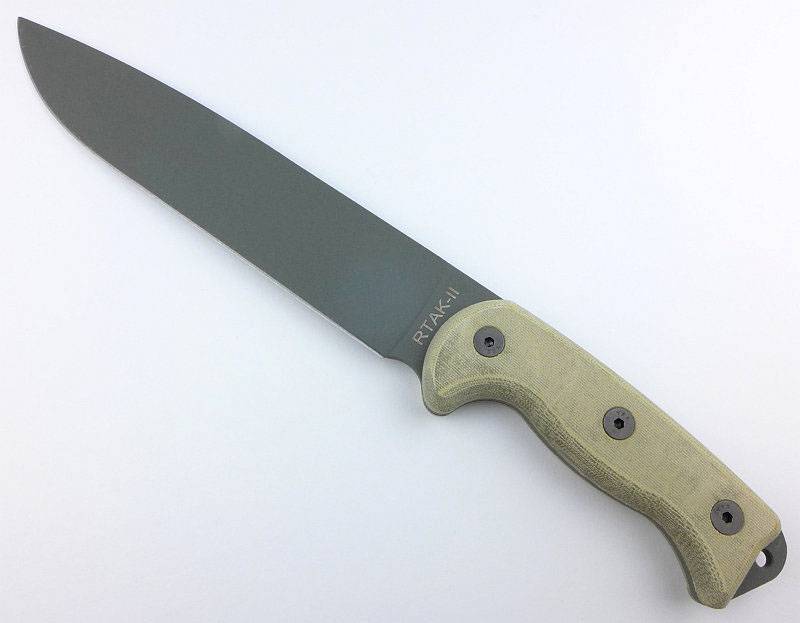
Discussing the Review:
Please feel free to add comments to the review, but the ideal place to freely discuss these reviews is on a forum. If you started reading the shorter forum version of the review, but followed the link this full exclusive review, please return to that forum to discuss the review there.
If you read the review entirely on Tactical Reviews, please consider one of the following to join in any discussion.
EdgeMatters – Sponsored Reviews (UK based Forum for Knife Makers and Collectors)
BladeForums – Knife Reviews (US based Forum for Knife Discussion)
CandlePowerForums – Knife Reviews Section (Largest and Friendliest Flashlight Community Forum)

